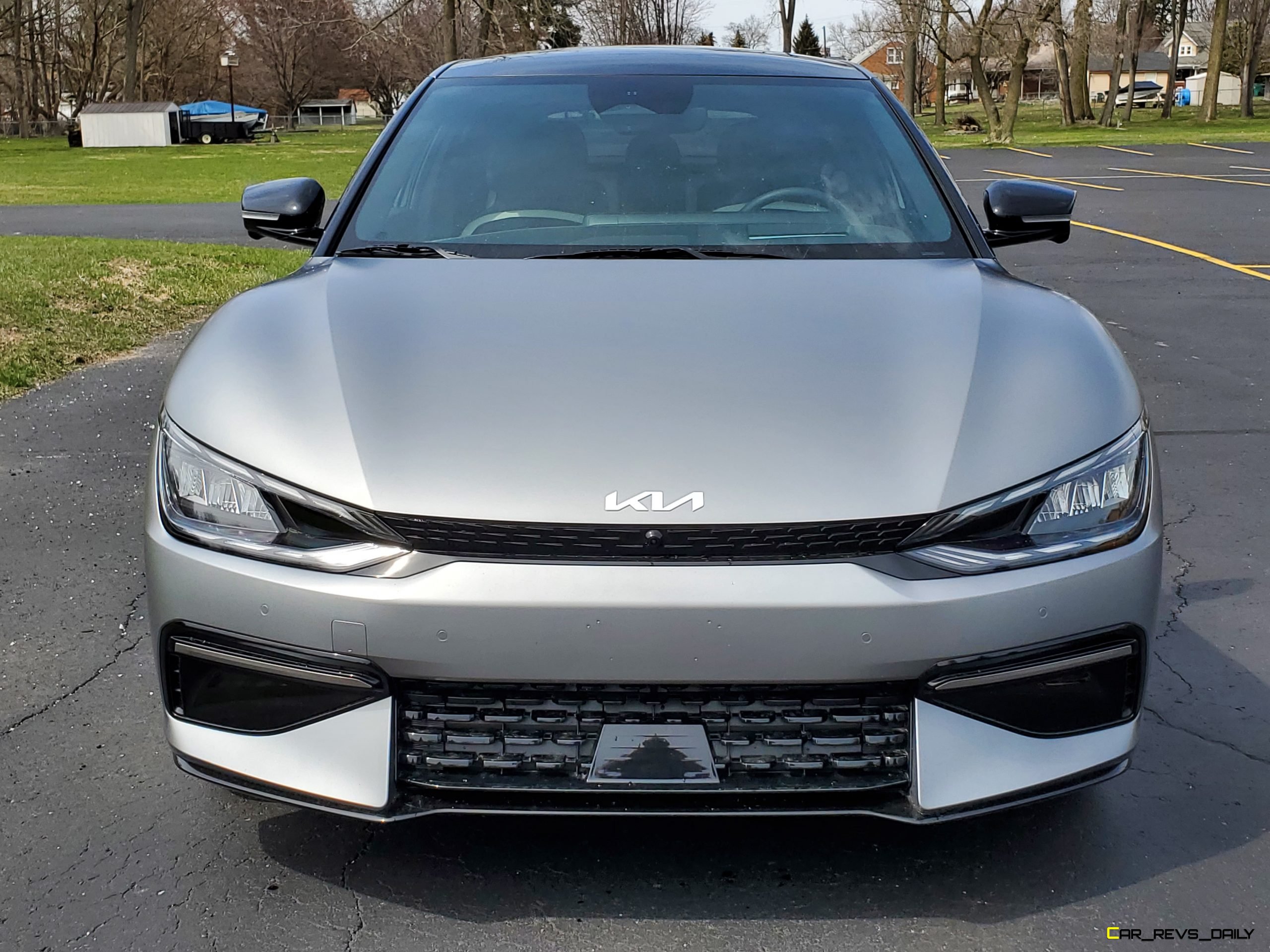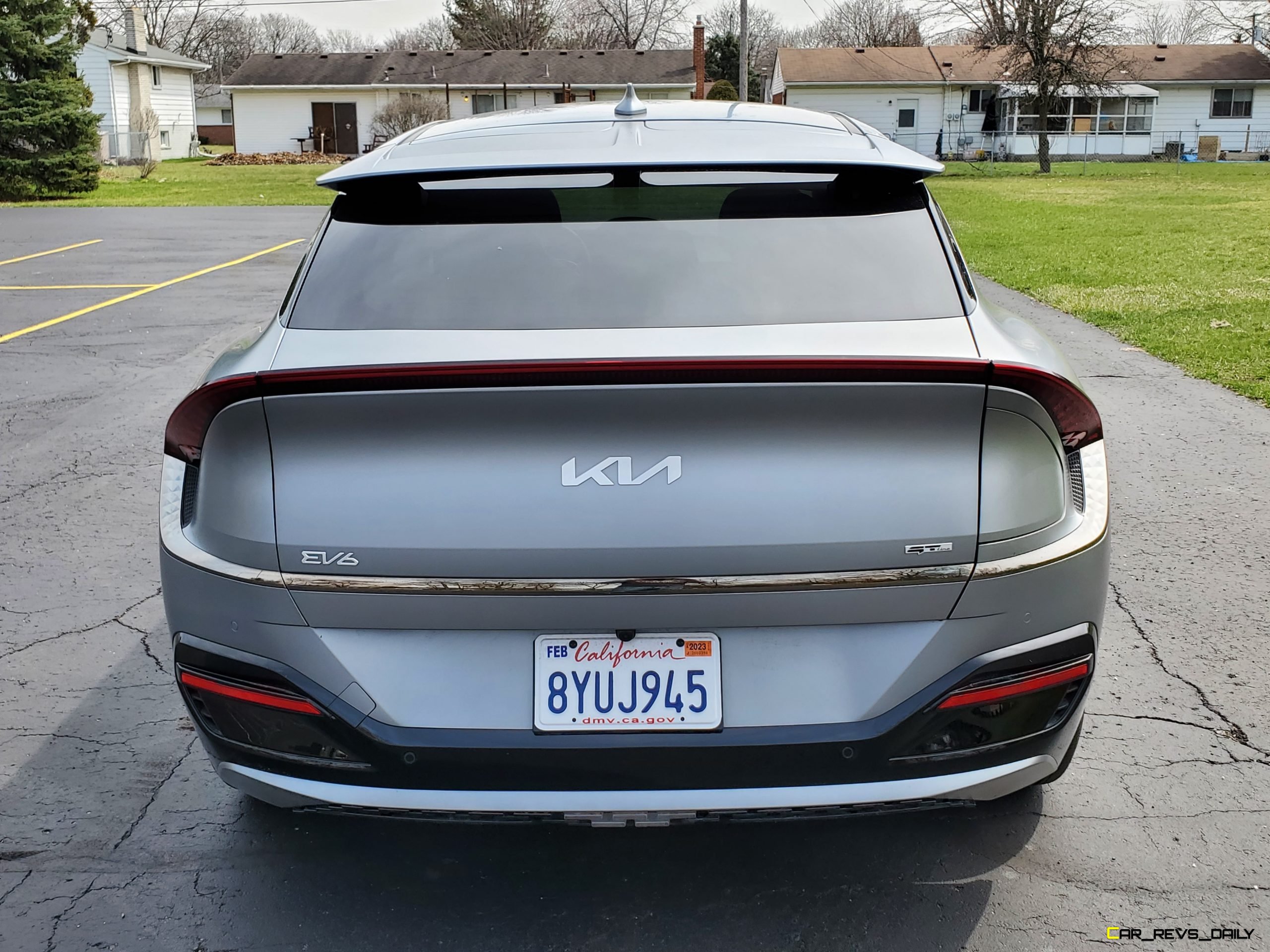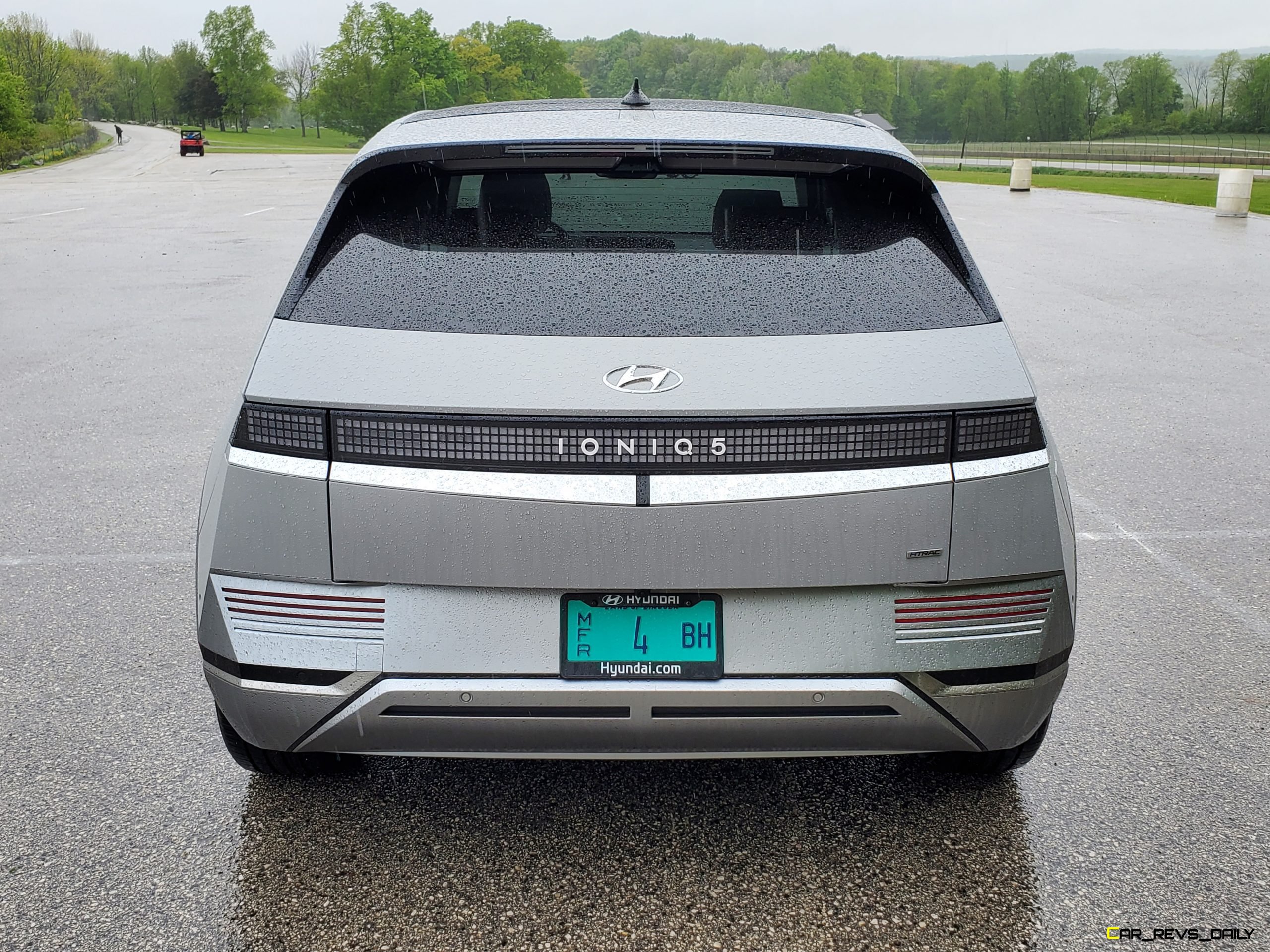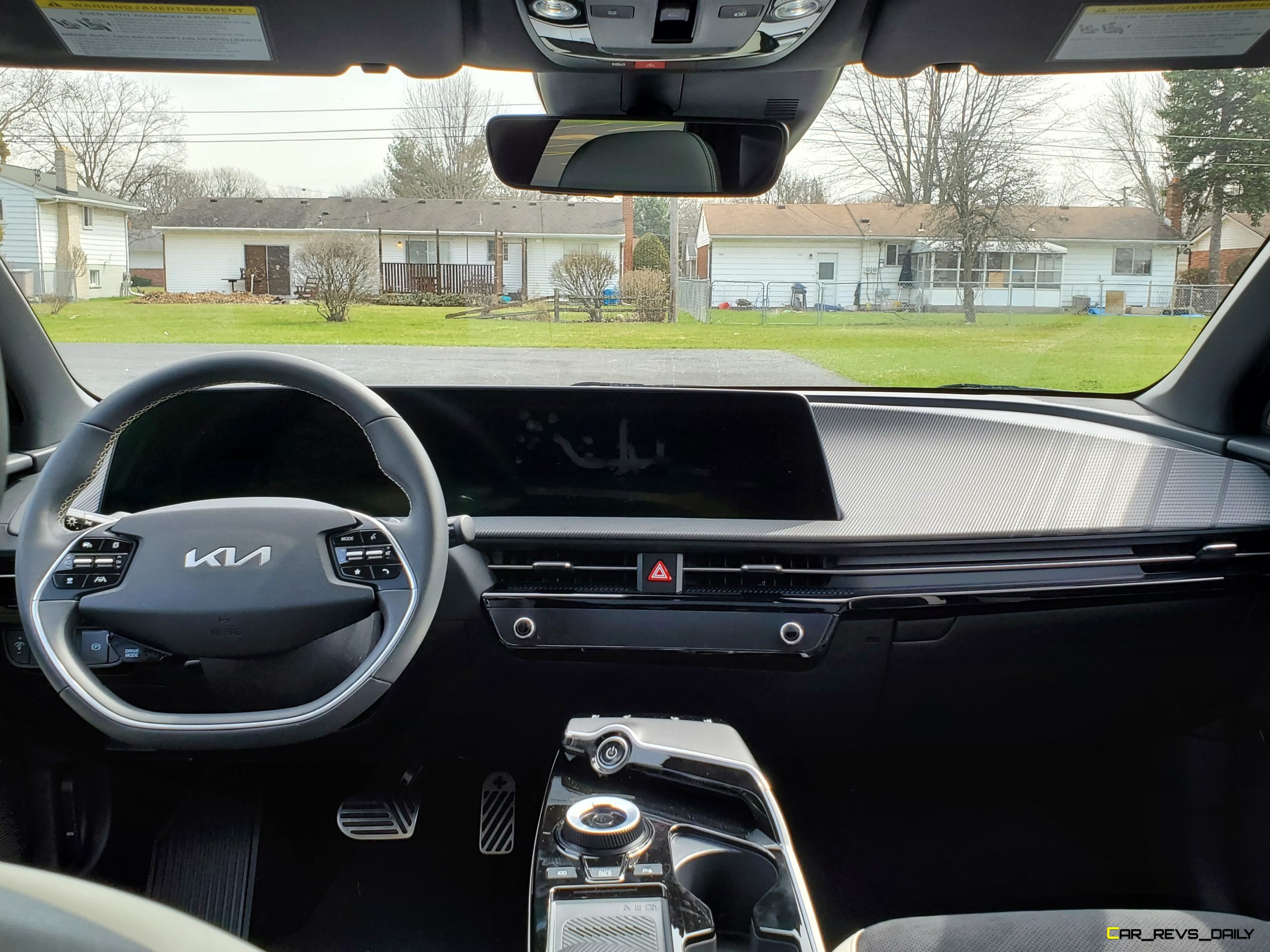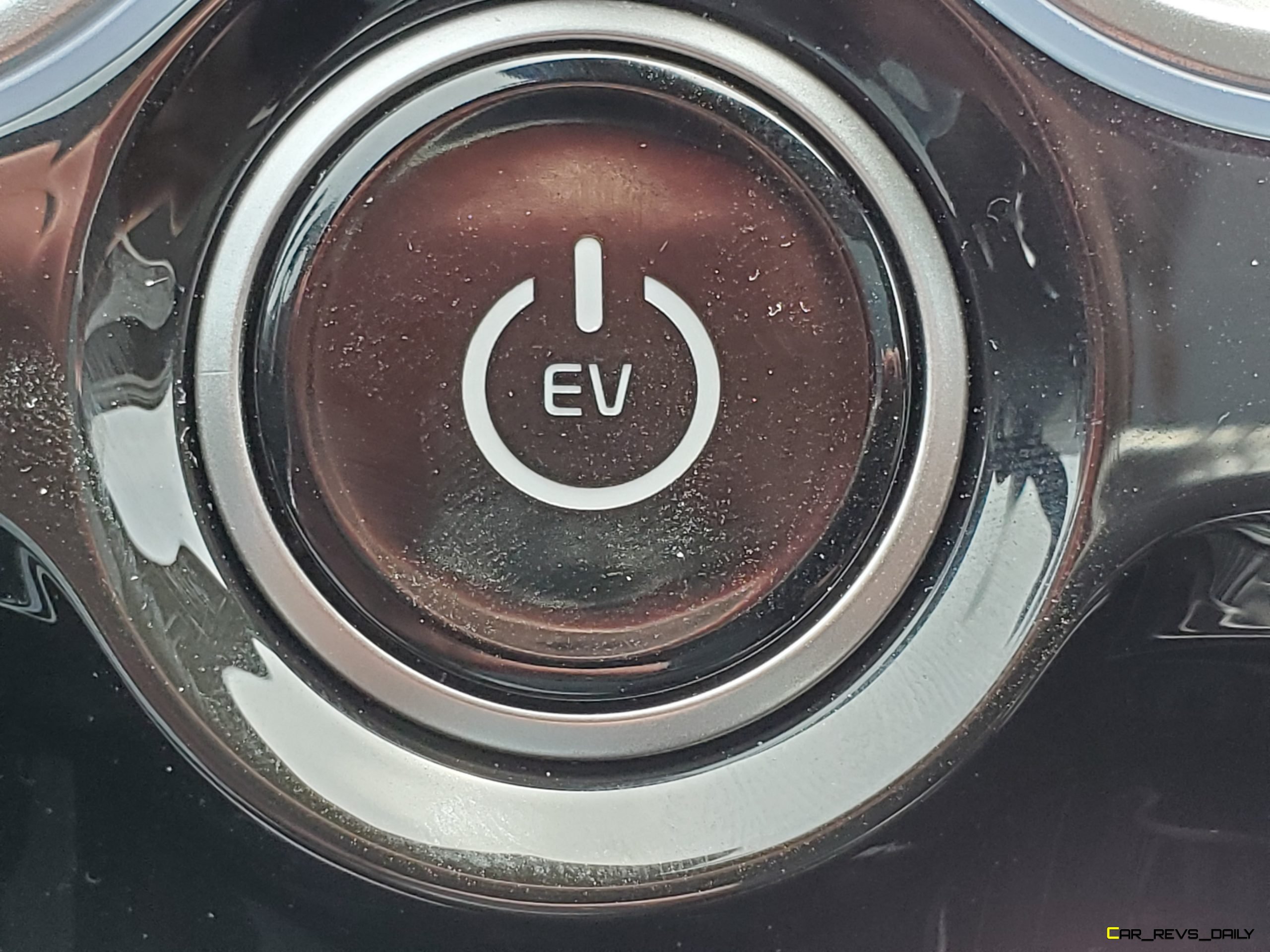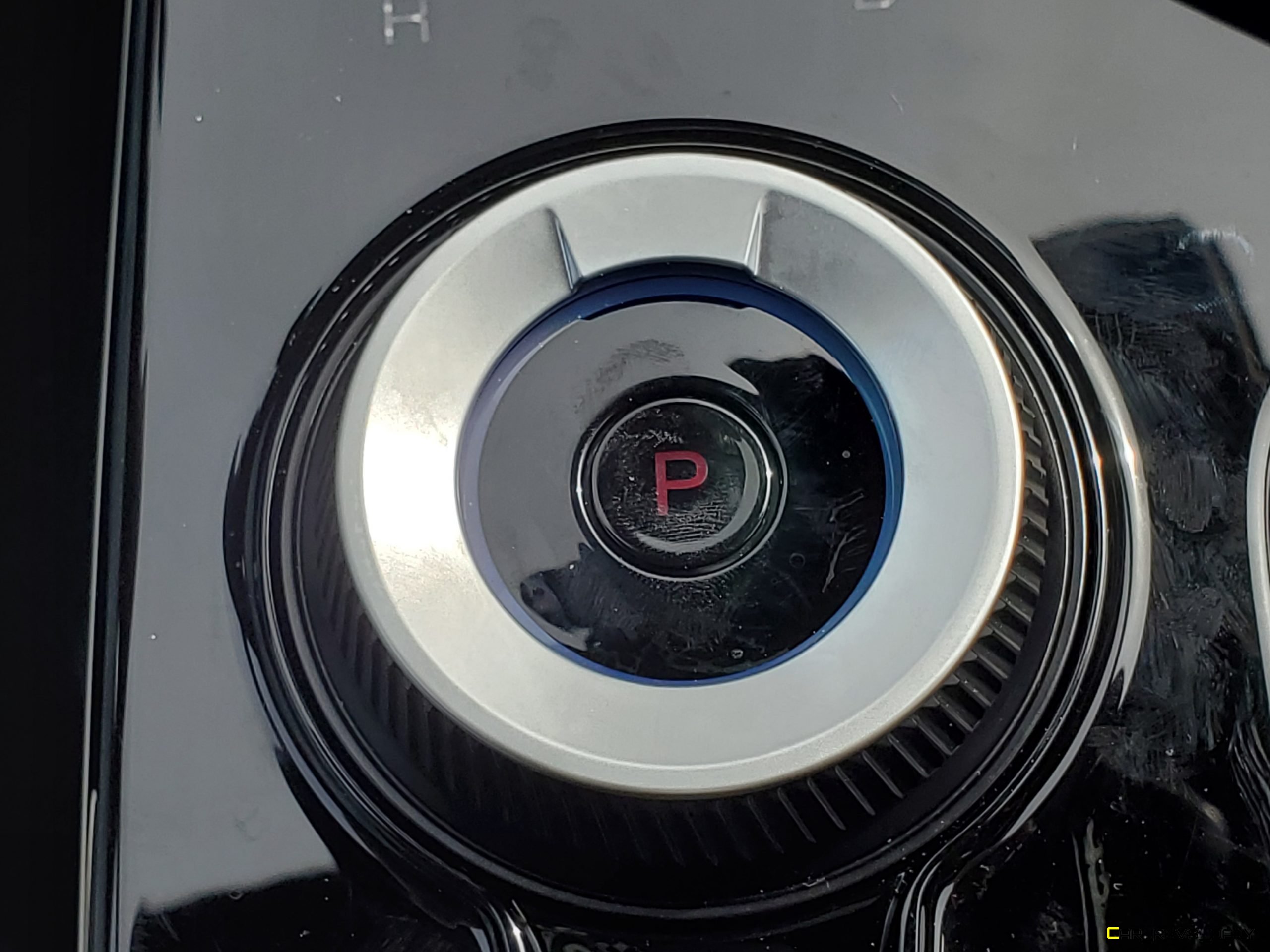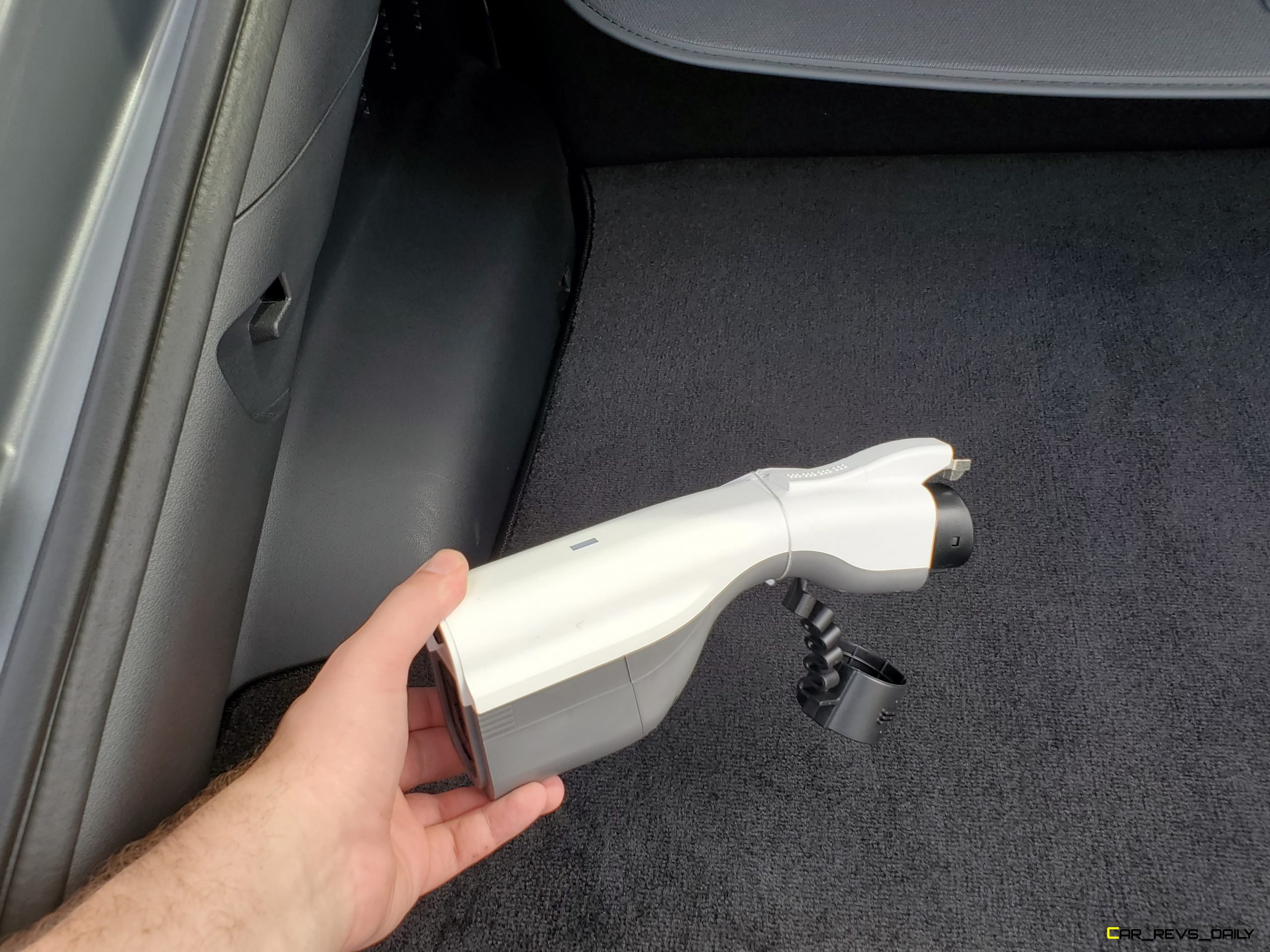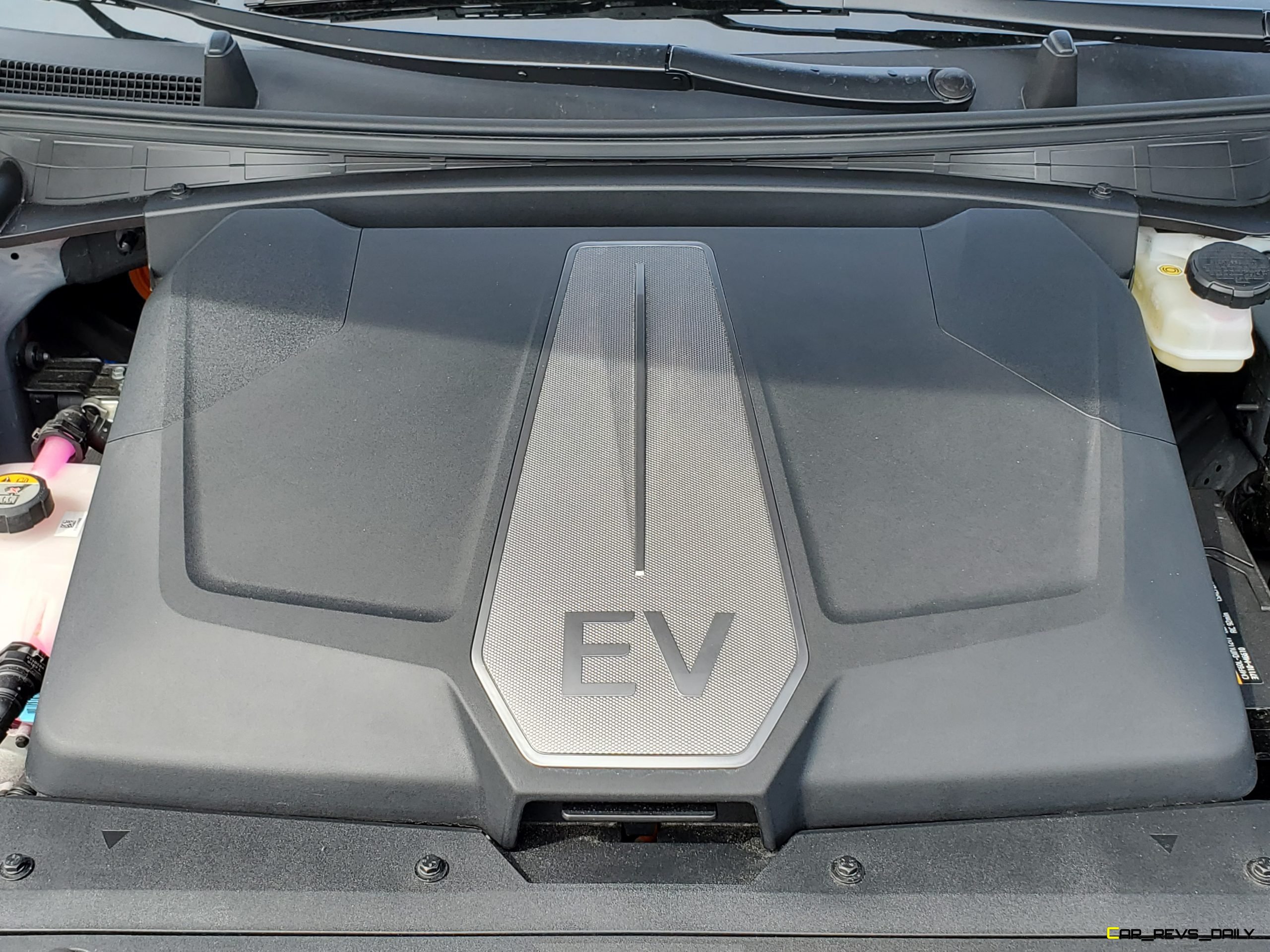Hyundai and Kia are both preparing for an EV-fueled future with the Kia EV6 and the Hyundai Ioniq 5. Both of these SUVs are eager to show off their green roots but go about it in different ways. But which one is best? We decided to follow up on Ben Lewis’s recent experience with the EV6 to see which one is indeed best?
Ioniq & EV6 Birds Of A Different Feather
Both of these models share the same platform, but that doesn’t mean that things have devolved into a situation like the old Chevrolet Trailblazer and its myriad of rebadged siblings where lazy trim changes and equally mundane name changes were the expected normal. Instead, the exterior styling of the Ioniq and the EV6 moves in two different directions. The Ioniq focuses on achieving a clean yet distinctly blocky look while the EV6 is more athletic and curvy.
However, in the battle of pure aesthetics, we have to give a nod to the Hyundai due to the way that it manages to incorporate some of the core essentials in a more cohesive way. The rear styling for example doesn’t;t go overboard in its attempts to stand out with the blocky style taillights taking us back to the 64-bit charms of the 1990s and early 2000s. In contrast, the Kia is a look forward into the future and the front fascia mirrors some of the styling cues that we have seen in recent Kia models. But move to the back and the rear fascia rapidly transforms into the most controversial aspect of the SUV. A slender lightbar moves from one side of the liftgate to the other and serves to unify the taillights but the shape of the rear looks downright awkward from certain angles, and it also takes large chunks out of the rear visibility for drivers when backing out of a parking space or passing on the freeway.
EV6 Gains Ground In The Interior Department
While the Ioniq 5 walks all over the EV6 in exterior fitments, the balance shifts in a rather dramatic fashion towards the Kia. The interiors of both also focus on doing things in their own distinctive way, but the Kia’s extra vigor plays its crescendo when viewing certain aspects of the interior. While the steering wheel is an acquired taste, the rest of the cabin doubles down on sportiness. The seats of uplevel models like our tester feature cloth inserts to help keep occupants in place during spirited driving while the angled lines on the dashboard and the armrest help nail a cohesive theme. We also like the dial-controlled shifter which is less clunky than the Ioniq 5’s steering-wheel-mounted unit.
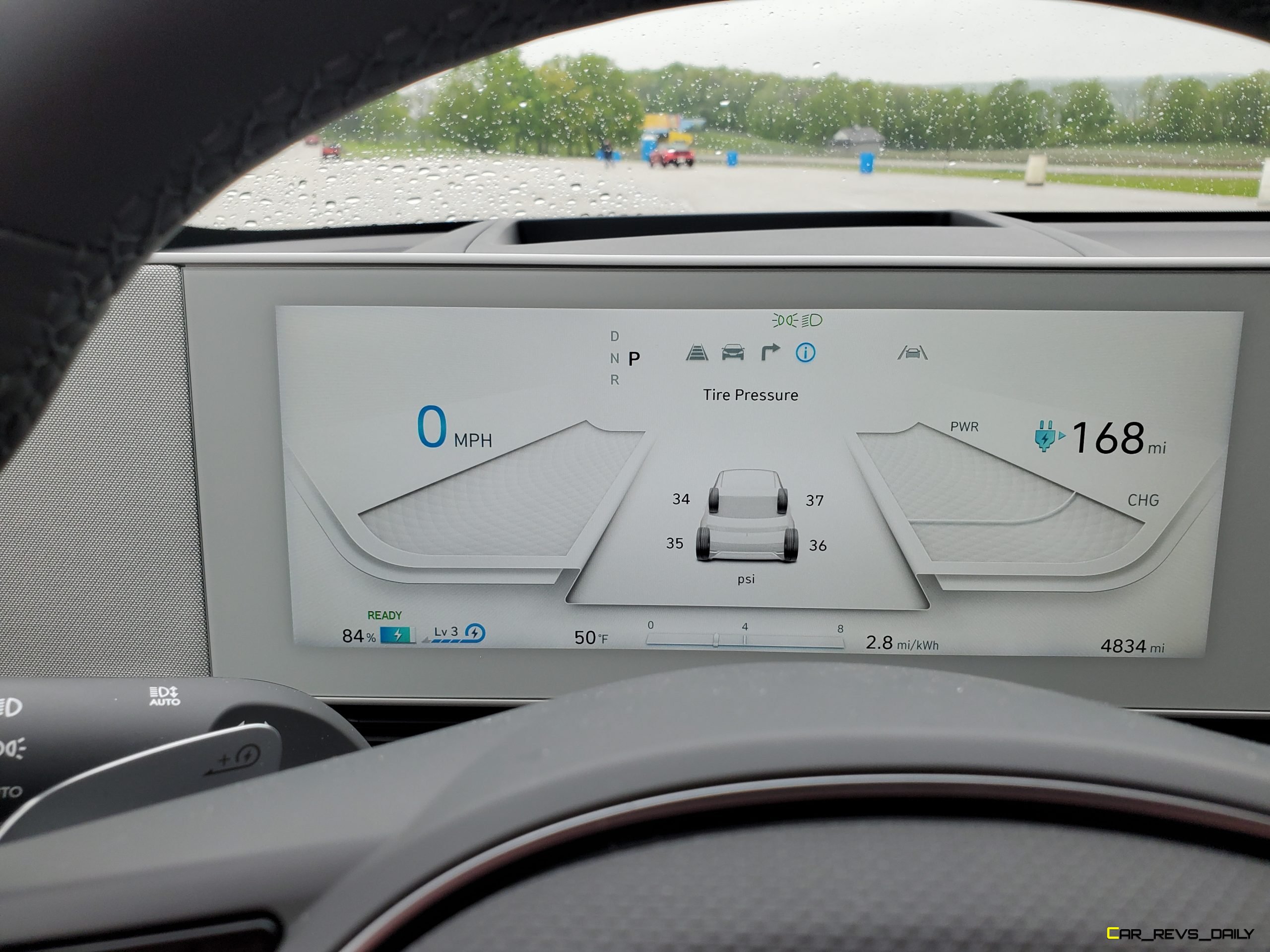
The Hyundai’s interior in contrast is a minimalist paradise with clean lines and very little to the imagination as far as pushing the envelope of style and design. The steering wheel is even devoid of a Hyundai badge with only four indentations on the airbag cover serving as the only adornment like a long-lost line of morse code. That minimalism might ruffle the feathers of some buyers, but the Hyundai’s cabin is still a roomy place to spend time in. Head and legroom is abundant even in the backseat which is largely due to the placement of the battery pack.
Dual 12.3-inch displays give the Hyundai a distinctly Apple-like presentation while the Kia’s gloss black adorned screens are clearly suited for the Android Auto crowd. Both car’s offer good sound systems, but we appreciated the slightly higher amounts of bass that the EV6’s system has versus the tinnier sounding speakers in the Hyundai.
Ioniq 5 & EV6 Fight Razor Close Performance Battle
Both cars ride on the same E-GMP (Electric- Global Modular Platform) and it should come as no shock that they appear to offer a nearly identical driving experience at first glance. As a result, you have to look at other areas to find any major differences. Range is a good place to start, with the block-shaped Hyundai Ioniq 5 AWD model getting 256 miles of range on a single charge while the EV6 GT-Line AWD gets 274 miles on a single charge.
Front-wheel-drive versions of both models continue the same script with the Ioniq getting 303 miles and the Kia a higher 310 miles. Neither of them will throw you in the back of your seat with the same ferocity as a Tesla Model Y, but both companies are promising respectable performance times for the duo with Hyundai claiming that the most powerful Ioniq 5 can make the sprint to 60 mph in 4.4 seconds, while the Kia we experienced did the deed in 4.5 seconds. The Kia has a sportier suspension tune and has a firmer ride that pays dividends in cornering. The Hyundai is focused on comfortable cruising and as a result, it has a slightly squishier suspension that does a better job absorbing bumps and divots but at the cost of some cornering prowess.
Braking for the two is nearly identical with both the Kia and the Hyundai delivering the same sensations through their regenerative tech-infused brake pedals. Both offer four levels of regenerative braking which can be selected via steering wheel-mounted paddles. The highest setting gets you into what’s called “iPedal Mode” which is jargon for true one-pedal driving. Both models offer Level 3 DC Charging capability right out the box and can even provide power to many household devices via a nifty Vehicle To Load plug that goes into the charging port. The lone catch here is that while the Hyundai comes with a 120-volt charging cord from the factory, the EV6 excludes it and owners will either have to have a charging station already installed in their home or have a nearby fast charger mapped out when it’s time to give the EV6 some juice. Kia reps claim that more of their dealerships will eventually have charging stations available, but in our case we discovered that our nearby Kia Dealer’s setup was not only in the back of the building (versus the front) but it was also blocked (ironically) by traditional ICE-powered vehicles.
Value Quotient
Pricing between the two is separated by only a small gap in the numbers with the base Ioniq 5 SE Standard Range starting at $41,245. The Wind version of the EV6 has a higher base figure of $42,145 with part of the increase due to the model having slightly more equipment. The Limited model we tried out at the 2022 MAMA Spring Rally event in Elkhart Lake, Wisconsin was a fully loaded Limited with a light sprinkling of options helping to push the final sticker to just over $51,100. Meanwhile, the GT-Line EV6 we experienced back home figured in higher at just over $55,000
It’s important to note that the Hyundai is launching with limited availability with the firm focusing initially on states with high EV sales markets first before eventually branching out to other states with the Ioniq 5. The Kia also has the same limited availability, however, the one thing that keeps it from being a solid value play over the Hyundai is its lack of factory supplied charging cord. Kia reps claim that the bulk of EV6 buyers will have a charging station installed in their home, but new owners that might be just entering the world of EVs will have to factor that in as a separate investment on top of the cost of the Kia with some cords costing over $150 with tax applied. In contrast, the Hyundai comes with a standard level 1 charging cord which is great for most buyers especially those (like us) who can’t easily install a charging station at their home.
If we were in the market ourselves, we would go for the Hyundai. The standard charging cord is a blessing for certain customers (you can see our TikTok vid on why the Michigan office does not have a charging station below.) and it manages to do many of the things that the Kia does well but with fewer compromises.
@carlmalek the @volvocarusa #xc60recharge has made itself at home here at the #office and we’re glad the cord is long enough for our setup Oh and for those #curious why I don’t have a #chargingstation installed here at the #office this #vid answers that too. #fyp #ev #suvsoftiktok #suvs #volvo #phev #greenmachine

Carl Malek has been an automotive journalist for over 10 years. First starting out as a freelance photographer before making the transition to writing during college, his work has appeared on numerous automotive forums as well as websites such as Autoshopper.com.
Carl is also a big fan of British vehicles with the bulk of his devotion going to the Morgan Motor Company as well as offerings from Lotus, MG, and Caterham. When he is not writing about automobiles, Carl enjoys spending time with his family and friends in the Metro Detroit area, as well as spending time with his adorable pets.



